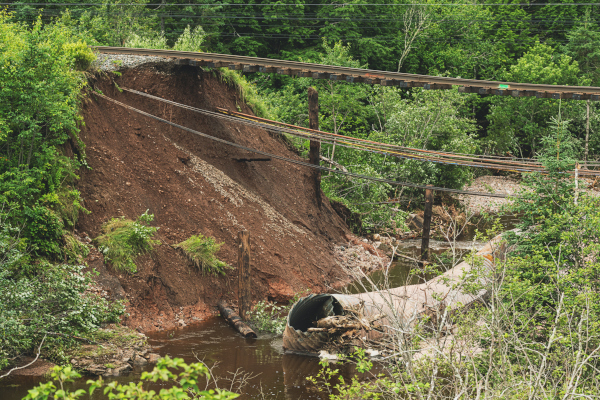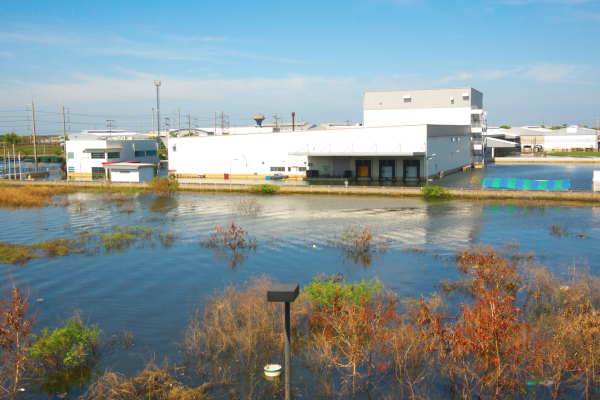Industry Leaders Warn of Economic Impacts of Climate Change on Supply Chains
Disruptions could increase if action is not taken to mitigate weather-related risk
The United States Senate Committee on the Budget held a hearing last week to discuss the possible threat climate change holds for the supply chain. Several industry experts addressed policymakers, warning of the potential economic impact of ignoring climate change-related supply chain disruptions.
Kathy Fulton, executive director of the American Logistics Aid Network (ALAN), cited three ways climate-related disasters disrupt supply chains, including:
- By disrupting supply and restricting the ability to provide a resource or service;
- By disrupting demand and hampering the ability of an end consumer to access a resource or service in the manner or location they do pre-disaster;
- Or by disrupting the coordination mechanisms, like information flows and financial transactions, that connect sources of supply with sources of demand.
“Any of these supply chain disruptions have a real cost to our economy, to communities, and to individuals and families,” said Fulton. “Businesses must spend money to protect against future disasters and address unbudgeted costs related to disruption; and many experience the financial effects for years after. Governments take on the cost to rebuild infrastructure; individuals and families take on the costs of rebuilding their lives.”
Fulton also explained that while businesses are increasingly seeking ways to adapt their supply chain and mitigate exposure risks of climate change, the number of businesses thinking broadly about adaptations is still small. She cited a recent survey by Price Waterhouse Coopers that found that less than one-fifth of firms “have implemented initiatives to protect their workforce or physical assets from the impacts of climate risk.”
“Businesses must spend money to protect against future disasters and address unbudgeted costs related to disruption; and many experience the financial effects for years after. Governments take on the cost to rebuild infrastructure; individuals and families take on the costs of rebuilding their lives.”
“Achieving supply chains capable of meeting consumer demand despite climate obstacles will require partnerships and trust building beyond just data sharing,” said Fulton. “Anticipating and adapting to the challenges of climate change requires a collaborative, cross-sector, “whole-of-nation” effort, one in which our country has not yet meaningfully engaged.”
Scott Kelly, head of environmental analytics at Risilience also spoke, citing research that found supply chains relying on specialized products and key infrastructure are at acute risk of serious disruption from climate-related weather events.
One example Kelly gave was of the microchip industry. The fabrication of microchips is an energy-intensive and water-dependent process. Taiwan, a country highly vulnerable to the impacts of climate change due to its location on the typhoon belt, is the world’s largest producer of microchips, accounting for over 60% of the global supply of semi-conductors and about 90% of the world’s most advanced microchips. Any disruptions to these factories caused by climate impacts, which Kelly said is increasingly likely, could therefore have substantial ripple effects in the U.S.
“It’s not just the lost productivity of U.S. firms and the furlough of U.S. workers, it’s also the cascading impacts on U.S. exports that depend on microchips within production processes,” said Kelly. “The manufacture and supply of microchips is just one example of how the growing physical risks from climate change will impact the trade of critical goods across and within U.S. borders.
“U.S. corporations are starting to realize the business imperative of mitigating and adapting to climate risks and accelerating their progress toward net-zero,” he continued. “The U.S. government can help support this process by incentivizing companies to build resilient supply chains and promoting the disclosure of these material financial risks, as these can have wide-ranging impacts across the U.S. and the global economy.”
Article Topics
ALAN News & Resources
60 Seconds with Robert Martichenko of American Logistics Aid Network 60 Seconds with Diego Vega from the Hanken School of Economics Industry Leaders Warn of Economic Impacts of Climate Change on Supply Chains Looking to Help Florida Hurricane Efforts: ALAN Offers Tips ALAN Executive Director provides guidance for businesses preparing for Hurricane Idalia ALAN introduces logistics effort focused on improving access to disaster aid American Logistics Aid Network launches new humanitarian program More ALANLatest in Transportation
Ranking the World’s 10 Biggest Supply Chains The Top 10 Risks Facing Supply Chain Professionals Walmart’s Latest Service: Ultra Late-Night Delivery City of Baltimore Files Lawsuit to Recoup Money for Collapsed Bridge The Era of Self-Driving Tractor-Trailers Set to Begin Is the Trailers as a Service (TaaS) Model Right For Your Business? Why Grocery Shoppers are Leaving Stores to Buy Their Food Online More TransportationAbout the Author












